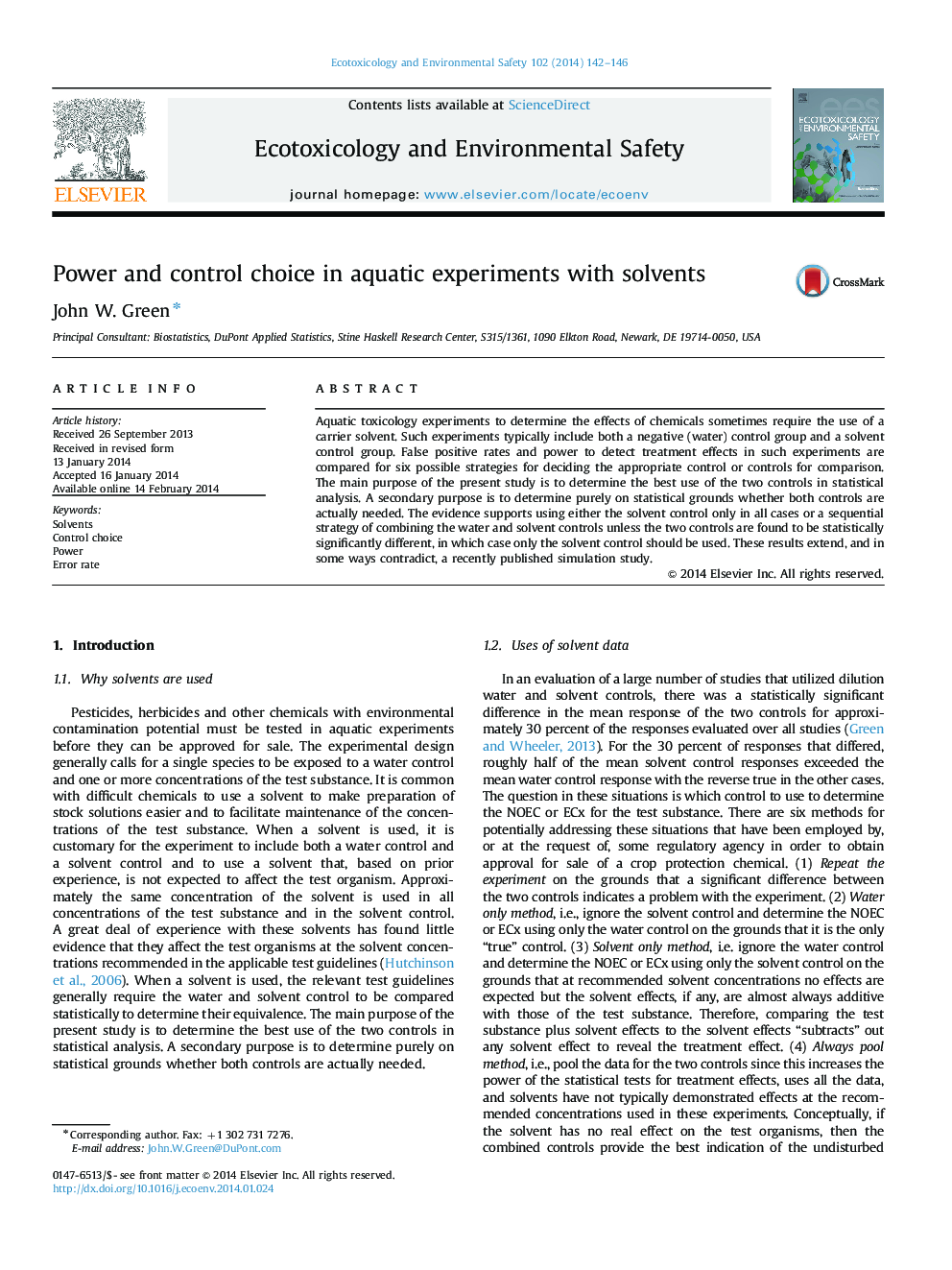| Article ID | Journal | Published Year | Pages | File Type |
|---|---|---|---|---|
| 6312167 | Ecotoxicology and Environmental Safety | 2014 | 5 Pages |
Abstract
Aquatic toxicology experiments to determine the effects of chemicals sometimes require the use of a carrier solvent. Such experiments typically include both a negative (water) control group and a solvent control group. False positive rates and power to detect treatment effects in such experiments are compared for six possible strategies for deciding the appropriate control or controls for comparison. The main purpose of the present study is to determine the best use of the two controls in statistical analysis. A secondary purpose is to determine purely on statistical grounds whether both controls are actually needed. The evidence supports using either the solvent control only in all cases or a sequential strategy of combining the water and solvent controls unless the two controls are found to be statistically significantly different, in which case only the solvent control should be used. These results extend, and in some ways contradict, a recently published simulation study.
Keywords
Related Topics
Life Sciences
Environmental Science
Environmental Chemistry
Authors
John W. Green,
